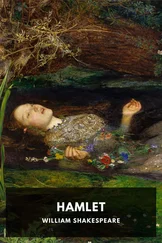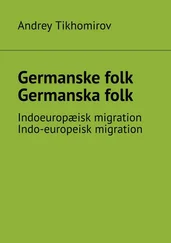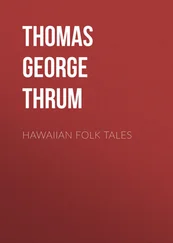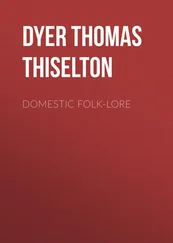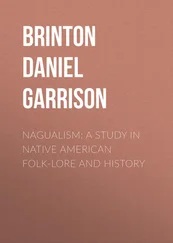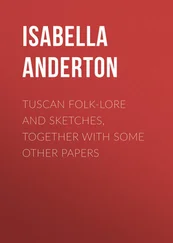Thomas Dyer - Folk-lore of Shakespeare
Здесь есть возможность читать онлайн «Thomas Dyer - Folk-lore of Shakespeare» — ознакомительный отрывок электронной книги совершенно бесплатно, а после прочтения отрывка купить полную версию. В некоторых случаях можно слушать аудио, скачать через торрент в формате fb2 и присутствует краткое содержание. Жанр: foreign_antique, foreign_prose, на английском языке. Описание произведения, (предисловие) а так же отзывы посетителей доступны на портале библиотеки ЛибКат.
- Название:Folk-lore of Shakespeare
- Автор:
- Жанр:
- Год:неизвестен
- ISBN:нет данных
- Рейтинг книги:4 / 5. Голосов: 1
-
Избранное:Добавить в избранное
- Отзывы:
-
Ваша оценка:
- 80
- 1
- 2
- 3
- 4
- 5
Folk-lore of Shakespeare: краткое содержание, описание и аннотация
Предлагаем к чтению аннотацию, описание, краткое содержание или предисловие (зависит от того, что написал сам автор книги «Folk-lore of Shakespeare»). Если вы не нашли необходимую информацию о книге — напишите в комментариях, мы постараемся отыскать её.
Folk-lore of Shakespeare — читать онлайн ознакомительный отрывок
Ниже представлен текст книги, разбитый по страницам. Система сохранения места последней прочитанной страницы, позволяет с удобством читать онлайн бесплатно книгу «Folk-lore of Shakespeare», без необходимости каждый раз заново искать на чём Вы остановились. Поставьте закладку, и сможете в любой момент перейти на страницу, на которой закончили чтение.
Интервал:
Закладка:
Owl. The dread attached to this unfortunate bird is frequently spoken of by Shakespeare, who has alluded to several of the superstitions associated with it. At the outset, many of the epithets ascribed to it show the prejudice with which it was regarded – being in various places stigmatized as “the vile owl,” in “Troilus and Cressida” (ii. I); and the “obscure bird,” in “Macbeth” (ii. 3), etc. From the earliest period it has been considered a bird of ill-omen, and Pliny tells us how, on one occasion, even Rome itself underwent a lustration, because one of them strayed into the Capitol. He represents it also as a funereal bird, a monster of the night, the very abomination of human kind. Vergil 277 277 “Æneid,” bk. iv. l. 462.
describes its death-howl from the top of the temple by night, a circumstance introduced as a precursor of Dido’s death. Ovid, 278 278 “Metamorphoses,” bk. v. l. 550; bk. vi. l. 432; bk. x. l. 453; bk. xv. l. 791.
too, constantly speaks of this bird’s presence as an evil omen; and indeed the same notions respecting it may be found among the writings of most of the ancient poets. This superstitious awe in which the owl is held may be owing to its peculiar look, its occasional and uncertain appearance, its loud and dismal cry, 279 279 “2 Henry VI.” iii. 2; iv. 1.
as well as to its being the bird of night. 280 280 “Titus Andronicus,” ii. 3.
It has generally been associated with calamities and deeds of darkness. 281 281 Cf. “Lucrece,” l. 165; see Yarrell’s “History of British Birds,” vol. i. p. 122.
Thus, its weird shriek pierces the ear of Lady Macbeth (ii. 2), while the murder is being committed:
“Hark! – Peace!
It was the owl that shriek’d, the fatal bellman,
Which gives the stern’st good night.”
And when the murderer rushes in, exclaiming,
“I have done the deed. Didst thou not hear a noise?”
she answers:
“I heard the owl scream.”
Its appearance at a birth has been said to foretell ill-luck to the infant, a superstition to which King Henry, in “3 Henry VI.” (v. 6), addressing Gloster, refers:
“The owl shriek’d at thy birth, an evil sign.”
Its cries 282 282 See Brand’s “Pop. Antiq.,” 1849, vol. iii. p. 209.
have been supposed to presage death, and, to quote the words of the Spectator , “a screech-owl at midnight has alarmed a family more than a band of robbers.” Thus, in “A Midsummer-Night’s Dream” (v. 1), we are told how
“the screech-owl, screeching loud,
Puts the wretch that lies in woe
In remembrance of a shroud;”
and in “1 Henry VI.” (iv. 2), it is called the “ominous and fearful owl of death.” Again, in “Richard III.” (iv. 4), where Richard is exasperated by the bad news, he interrupts the third messenger by saying:
“Out on ye, owls! nothing but songs of death?”
The owl by day is considered by some equally ominous, as in “3 Henry VI.” (v. 4):
“the owl by day,
If he arise, is mock’d and wonder’d at.”
And in “Julius Cæsar” (i. 3), Casca says:
“And yesterday the bird of night did sit,
Even at noon-day, upon the market-place,
Hooting and shrieking. When these prodigies
Do so conjointly meet, let not men say,
‘These are their reasons, – they are natural;’
For, I believe, they are portentous things
Unto the climate that they point upon.”
Considering, however, the abhorrence with which the owl is generally regarded, it is not surprising that the “owlet’s wing” 283 283 The spelling of the folios is “howlets.” In Holland’s translation of Pliny (chap. xvii. book x.), we read “of owlls or howlets.” Cotgrave gives “Hulotte.”
should form an ingredient of the caldron in which the witches in “Macbeth” (iv. 1) prepared their “charm of powerful trouble.” The owl is, too, in all probability, represented by Shakespeare as a witch, 284 284 Halliwell-Phillipps’s, “Handbook Index,” 1866, p. 354.
a companion of the fairies in their moonlight gambols. In “Comedy of Errors” (ii. 2), Dromio of Syracuse says:
“This is the fairy land: O, spite of spites!
We talk with goblins, owls, and elvish sprites.
If we obey them not, this will ensue,
They’ll suck our breath, or pinch us black and blue!”
Singer, in his Notes on this passage (vol. ii. p. 28) says: “It has been asked, how should Shakespeare know that screech-owls were considered by the Romans as witches?” Do these cavillers think that Shakespeare never looked into a book? Take an extract from the Cambridge Latin Dictionary (1594, 8vo), probably the very book he used: “Strix, a scritche owle ; an unluckie kind of bird (as they of olde time said) which sucked out the blood of infants lying in their cradles; a witch, that changeth the favour of children; an hagge or fairie.” So in the “London Prodigal,” a comedy, 1605: “Soul, I think I am sure crossed or witch’d with an owl.” 285 285 See Dyce’s “Glossary,” p. 302.
In “The Tempest” (v. 1) Shakespeare introduces Ariel as saying:
“Where the bee sucks, there suck I,
In a cowslip’s bell I lie,
There I couch when owls do cry.”
Ariel, 286 286 See Singer’s “Notes to The Tempest,” 1875, vol. i. p. 82.
who sucks honey for luxury in the cowslip’s bell, retreats thither for quiet when owls are abroad and screeching. According to an old legend, the owl was originally a baker’s daughter, to which allusion is made in “Hamlet” (iv. 5), where Ophelia exclaims: “They say the owl was a baker’s daughter. Lord! we know what we are, but know not what we may be.” Douce 287 287 See Gentleman’s Magazine , November, 1804, pp. 1083, 1084. Grimm’s “Deutsche Mythologie.”
says the following story was current among the Gloucestershire peasantry: “Our Saviour went into a baker’s shop where they were baking, and asked for some bread to eat; the mistress of the shop immediately put a piece of dough into the oven to bake for him; but was reprimanded by her daughter, who, insisting that the piece of dough was too large, reduced it to a very small size; the dough, however, immediately began to swell, and presently became a most enormous size, whereupon the baker’s daughter cried out, ‘Heugh, heugh, heugh!’ which owl-like noise probably induced our Saviour to transform her into that bird for her wickedness.” Another version of the same story, as formerly known in Herefordshire, substitutes a fairy in the place of our Saviour. Similar legends are found on the Continent. 288 288 See Dasent’s “Tales of the Norse,” 1859, p. 230.
Parrot. The “popinjay,” in “1 Henry IV.” (i. 3), is another name for the parrot – from the Spanish papagayo – a term which occurs in Browne’s “Pastorals” (ii. 65):
“Or like the mixture nature dothe display
Upon the quaint wings of the popinjay.”
Its supposed restlessness before rain is referred to in “As You Like It” (iv. 1): “More clamorous than a parrot against rain.” It was formerly customary to teach the parrot unlucky words, with which, when any one was offended, it was the standing joke of the wise owner to say, “Take heed, sir, my parrot prophesies” – an allusion to which custom we find in “Comedy of Errors” (iv. 4), where Dromio of Ephesus says: “prophesy like the parrot, beware the rope’s end .” To this Butler hints, where, speaking of Ralpho’s skill in augury, he says: 289 289 “Hudibras,” pt. i. ch. i.
Интервал:
Закладка:
Похожие книги на «Folk-lore of Shakespeare»
Представляем Вашему вниманию похожие книги на «Folk-lore of Shakespeare» списком для выбора. Мы отобрали схожую по названию и смыслу литературу в надежде предоставить читателям больше вариантов отыскать новые, интересные, ещё непрочитанные произведения.
Обсуждение, отзывы о книге «Folk-lore of Shakespeare» и просто собственные мнения читателей. Оставьте ваши комментарии, напишите, что Вы думаете о произведении, его смысле или главных героях. Укажите что конкретно понравилось, а что нет, и почему Вы так считаете.




